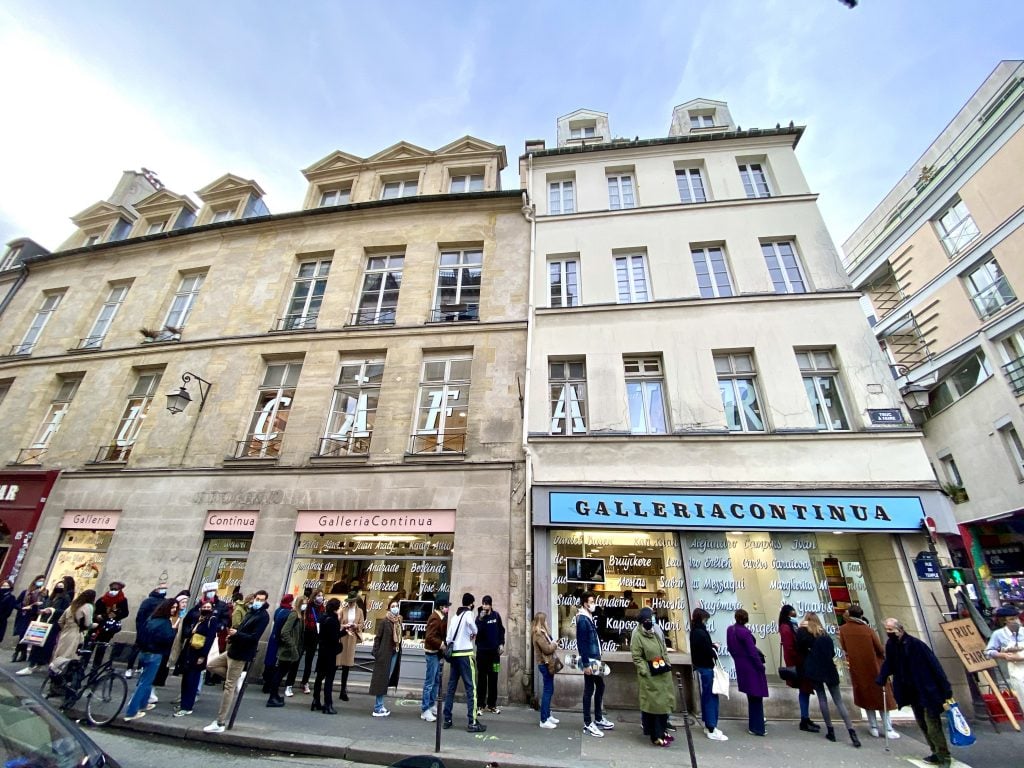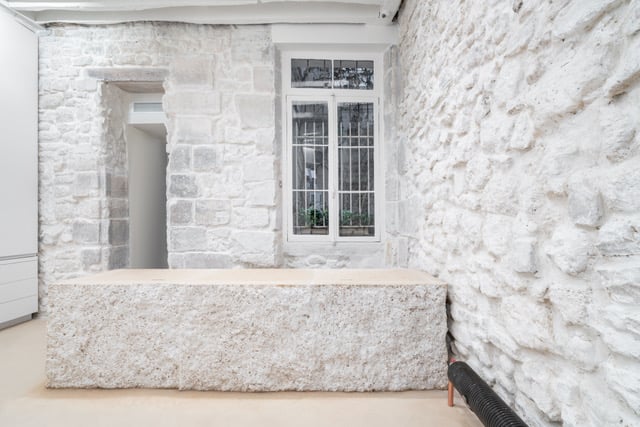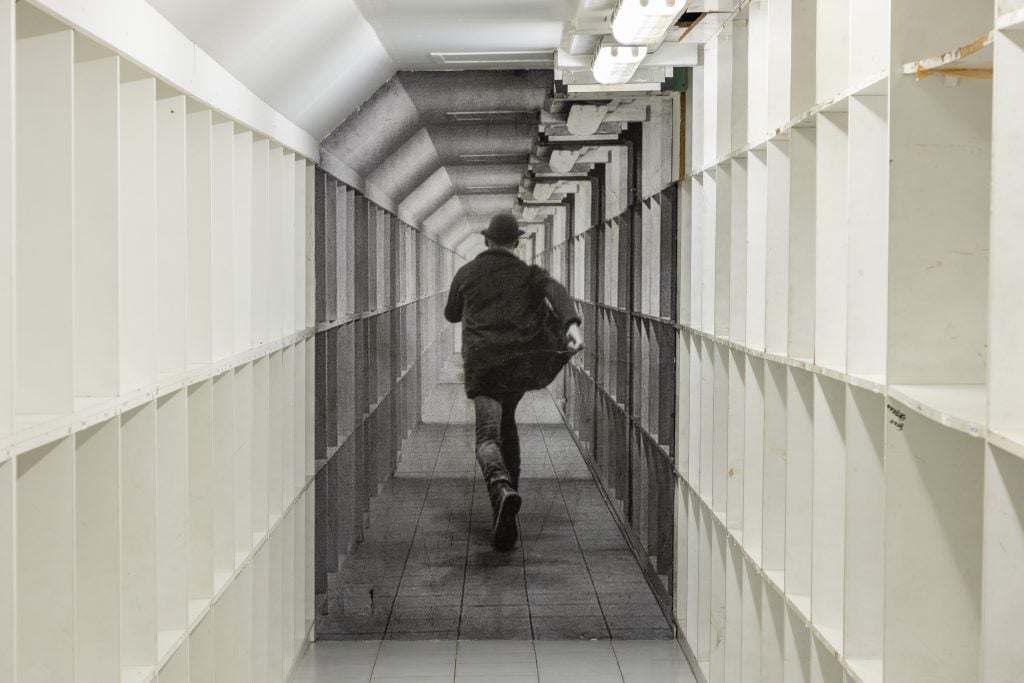Market
Suddenly, Paris Is Once Again a Buzzing Capital of the Contemporary Art Market. Here’s How It Regained Its Glory
Real estate opportunities, the impact of Brexit, and a large community of artists are drawing the trade to the French capital.

Real estate opportunities, the impact of Brexit, and a large community of artists are drawing the trade to the French capital.

Naomi Rea

In the 1920s, Paris was an art market center.
Dealers on the Left Bank were known for nurturing adventurous new talent, with Léonce Roseberg showing Georges Braque and Fernand Léger, while Paul Guillaume was promoting Derain and Matisse. Meanwhile, the city’s secondary art market, led by the Hôtel Drouot auction house and dealers including Nathan Wildenstein, and Ernest and René Gimpel, was a world leader during the interwar years.
But the outbreak of World War II prompted an exodus of leading dealers to New York, and the French scene was shortly eclipsed. Many cite Robert Rauschenberg’s Golden Lion win at the 1964 Venice Biennale as the final seal of US ascendance over the French art scene.
Now, the tide is turning again. The rising profile of Parisian art fairs, complemented by a resuscitated auction market and an influx of international galleries, has brought renewed attention to the French capital. Suddenly, France’s position in the international market is on an upward trajectory.
Artnet’s Spring 2020 Intelligence Report noted that the country’s auction industry grew by a massive 49 percent in 2019, boosted by a big increase in the number of works offered at its three biggest houses, Sotheby’s, Christie’s, and Artcurial.
Its global market share that year was seven percent, a three percent increase on the previous year, wrested from the control of the US and the UK. And while the country’s market slipped in the crisis year of 2020, with total sales declining 34 percent, it still did marginally better than the US and UK markets, where sales dipped by 35 percent each.
That energy, while somewhat enervated in the past year, is drawing dealers in.
Italian gallerist Massimo de Carlo, who opened a small space in the Marais in January, says an “active and attentive” local scene, as well as a thriving artist community, convinced him to open an outpost in the city.
The space will only show one artwork at a time as a way to “shake up the status quo,” de Carlo says, adding that he hopes it will “attract cultural energies inside and outside the classical gallery schemes.”
“A new dynamic has been created in recent years, restoring Paris’s place in the art market to its former glory,” Cécile Verdier, president of Christie’s France, tells Artnet News. The auction house asserted that newfound importance by including Paris in its four-city global relay sale, “One,” alongside the market centers of Hong Kong, London, and New York.
Verdier points to the success of the city’s fairs as a hinge: for the past five years, Christie’s has organized its sales calendar to capitalize on the regular arrival of foreign collectors. The auction house’s contemporary sales take place during FIAC week; photo auctions during Paris Photo; and modern works on paper sales during Salon du Dessin.
This year, the auction house is expanding and renovating its Paris headquarters on Avenue Matignon, which is fast becoming a new art center. New gallery neighbors include Almine Rech and Emmanuel Perrotin, which are expanding their footprints in the city beyond the typical gallery district of the Marais.
“I wanted to be closer to my clients who work in the West of Paris,” Rech says of her space on Avenue Matignon, which opened in January. “Now, they [can] see a painting at lunchtime. It takes twice as long to get down to the Marais.”

Massimo De Carlo Pièce Unique, Paris. Photo by Delfino Sisto Legnani and Piercarlo Quecchia. Courtesy Massimo de Carlo.
UK-based galleries such as White Cube, which announced it would open a Paris space in 2019, are also moving in, especially after Brexit. Having a space inside the EU ensures minimum business interruption, and Paris was particularly attractive as an entry point because of France’s low import taxes on art.
Justine Durrett, the director of David Zwirner’s Paris branch, says Brexit played a significant role in the gallery’s decision to open the outpost in 2019.
“Paris a central point of gravity that attracts people from all over, whether it’s Americans who have a pied à terre here, collectors from Asia who come through several times a year, or all sorts of Europeans from throughout the continent,” Durrett says.
When the pandemic made travel practically impossible, locals filled the void. “I think culture and the arts have a very special place within French culture,” Durrett says. “Every Saturday we have hundreds and hundreds of visitors.”
Those visitors also have a growing list of options, with the opening of institutions such as the Fondation Louis Vuitton and news of François Pinault’s forthcoming museum, the Bourse de Commerce.
“I think there’s been a sort of renewed energy and investment in [Paris for] contemporary artists that has made it more attractive internationally,” Durrett says.

“Truc à Faire” 2021. exhibition views at Galleria Continua, Paris. Courtesy the artists and Galleria Continua. Photo by Sara De Santis.
Another factor driving interest are the real estate opportunities made available by closed office spaces and empty storefronts.
While space in Paris does not come cheap—the average cost is some €11,000 per square meter (about $1,200 per square foot)—real estate specialists Meilleurs Agents reports that prices have dropped 1.8 percent over the past year, a sharp contrast to the 31.4 percent rise the city saw over the previous five years.
But for many, it’s just a question of finding the right space and letting the excitement take over.
Maurizio Rigillo, the cofounder of Galleria Continua, says it decided to open a 9,000-square-foot space made of five connected buildings in the Marais last December because it was too good an opportunity to let go.
“We contacted the owner straight away, signed the contract and decided to open after a little more than a month,” Riglio says.
Those who have been in the city longer are happy about the general trend.
“It’s good when people come,” Rech says. “It gives more interest to the scene, and new spaces and museums give people a reason to return to Paris.”
But the gallerist adds that speculation about Paris dethroning London as Europe’s primary art center is premature.
“It’s true that more galleries are coming from New York, London, and other places,” she says. “But notice that they have all kept their London spaces. They just added another one in Paris. So this is good for Paris, but it is not bad for London.”